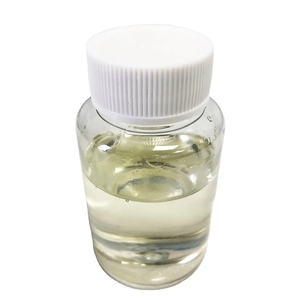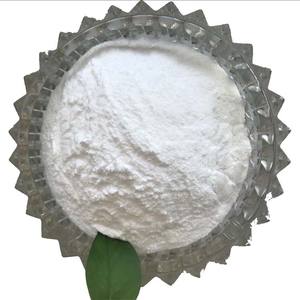Enhancing Concrete Performance: The Science, Applications, and Future of Water Reducing Agents in Modern Construction harga superplasticizer
Introduction to Water Decreasing Representatives: A Game-Changer in Concrete Modern Technology
Water minimizing agents (WRAs), likewise known as plasticizers, are crucial chemical admixtures made use of in modern concrete formulation to enhance workability while minimizing water web content. By distributing cement bits better, these representatives allow the manufacturing of high-performance concrete with enhanced mechanical properties, durability, and sustainability. As building needs evolve– calling for stronger, longer-lasting, and environmentally friendly materials– water lowering agents have come to be main to advancement in civil design and framework development.
(Cabr superliasticizer)
Chemistry and Category of Water Minimizing Professionals
Water reducing agents feature by adsorbing onto the surface area of concrete particles, creating electrostatic repulsion that avoids cluster and boosts flowability. They are mainly identified into three generations based on their chemical framework and efficiency level: lignosulfonates (initial generation), sulfonated melamine formaldehyde (SMF) and naphthalene sulfonate formaldehyde condensates (NSF) (second generation), and polycarboxylate ether (PCE)-based superplasticizers (3rd generation). Each class uses distinctive benefits in regards to dosage efficiency, slump retention, and compatibility with different concrete kinds, making them ideal for different building situations.
Mechanism of Action: How Water Decreasing Agents Boost Concrete Performance
The primary feature of a water lowering agent is to reduce the water-to-cement (w/c) ratio without compromising workability. This decrease brings about greater compressive toughness, lowered porosity, and improved resistance to ecological tensions such as freeze-thaw cycles and chemical strike. WRAs attain this by changing the rheological actions of the cement paste, enabling far better compaction and denser microstructures. Advanced formulas, especially PCE-based ones, can be customized at the molecular level to enhance diffusion and hydration kinetics, even more boosting early-age and long-lasting concrete buildings.
Industrial Applications Across Building And Construction Sectors
Water decreasing agents are indispensable across a vast array of building applications. In high-rise buildings and bridges, they make it possible for making use of self-compacting concrete (SCC), which moves easily into complicated kinds without resonance. In precast and prestressed concrete components, WRAs add to faster demolding and enhanced production prices. Infrastructure projects such as passages, dams, and freeways take advantage of their capacity to boost sturdiness under severe conditions. Even in environment-friendly building efforts, WRAs support the growth of low-carbon concretes by facilitating the unification of auxiliary cementitious materials like fly ash and slag.
Market Trends and Technical Advancements
The global market for water reducing agents is growing rapidly, driven by urbanization, framework investments, and the demand for sustainable building and construction remedies. Technological developments have brought about the growth of hybrid and multifunctional WRAs that integrate water reduction with retardation, air entrainment, or viscosity adjustment. Digital devices such as AI-driven admixture optimization and real-time surveillance systems are being integrated right into concrete production to make certain precise application and consistent high quality. Additionally, producers are concentrating on enhancing product security, reducing level of sensitivity to varying cement chemistries, and decreasing ecological effect through greener synthesis routes.
Challenges and Environmental Considerations
Despite their advantages, water lowering agents deal with obstacles pertaining to cost, compatibility, and ecological impact. Some standard WRAs may have hazardous byproducts or need energy-intensive production methods. Concerns such as slump loss in time, level of sensitivity to temperature variants, and communications with various other admixtures complicate their usage in field conditions. From an ecological perspective, there is raising pressure to establish naturally degradable and safe alternatives. Researchers are checking out bio-based plasticizers originated from renewable resources, aiming to minimize reliance on petrochemical feedstocks and line up with circular economic climate principles.
Future Prospects: Advancement and Sustainability in Admixture Development
( concrete addtives)
The future of water lowering representatives hinges on clever, lasting, and extremely engineered services. Breakthroughs in nanotechnology and polymer scientific research are allowing the style of next-generation WRAs with remarkable efficiency qualities and very little environmental impact. Innovations such as encapsulated launch systems, responsive polymers, and carbon-negative admixtures are being checked out to fulfill evolving building demands. Additionally, the assimilation of electronic systems and IoT-enabled sensors will certainly allow real-time control of admixture behavior during blending and healing. As the building industry moves toward decarbonization and resilience, water reducing agents will certainly play a critical role fit the future of concrete technology.
Supplier
Cabr-Concrete is a supplier of Concrete Admixture with over 12 years of experience in nano-building energy conservation and nanotechnology development. It accepts payment via Credit Card, T/T, West Union and Paypal. TRUNNANO will ship the goods to customers overseas through FedEx, DHL, by air, or by sea. If you are looking for high quality Concrete Admixture, please feel free to contact us and send an inquiry.
Tags: superplasticizer, water reducer, water reducing agent, concrete additives
All articles and pictures are from the Internet. If there are any copyright issues, please contact us in time to delete.
Inquiry us

